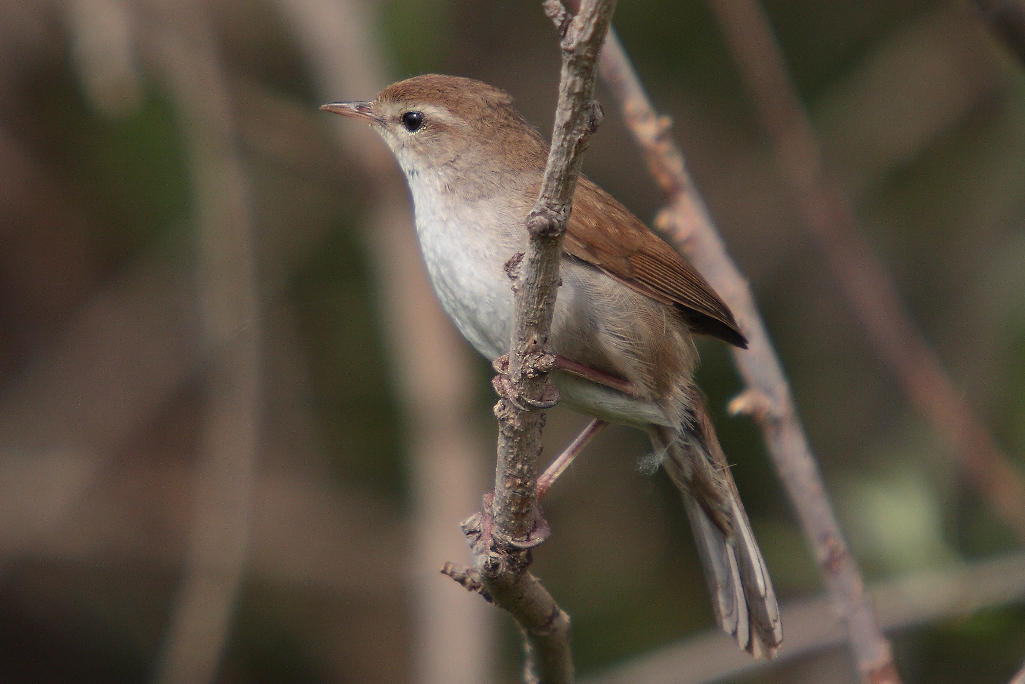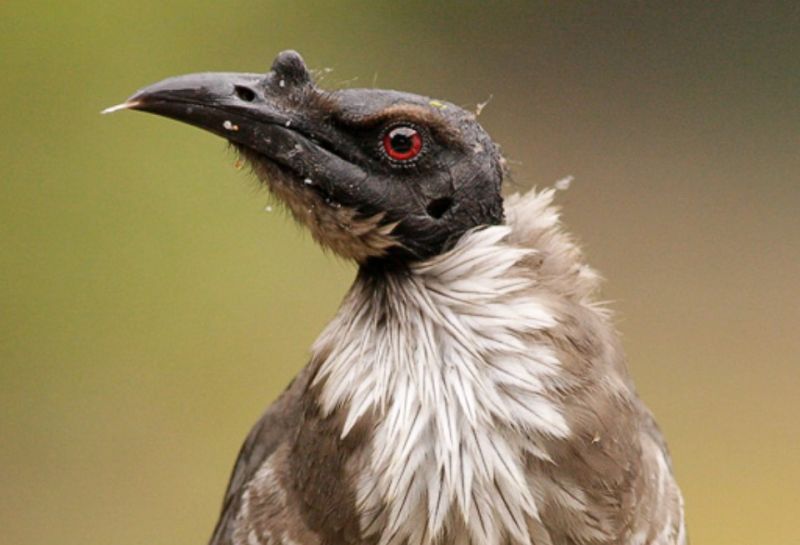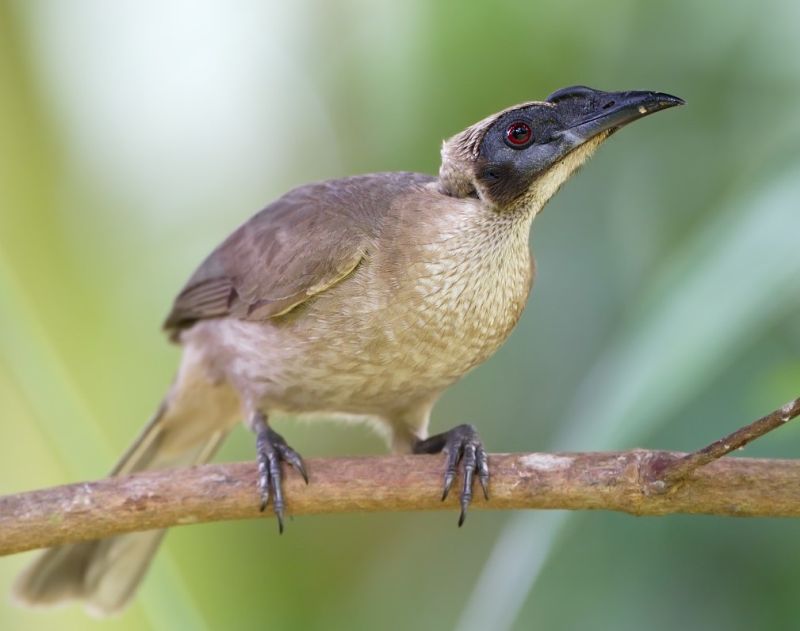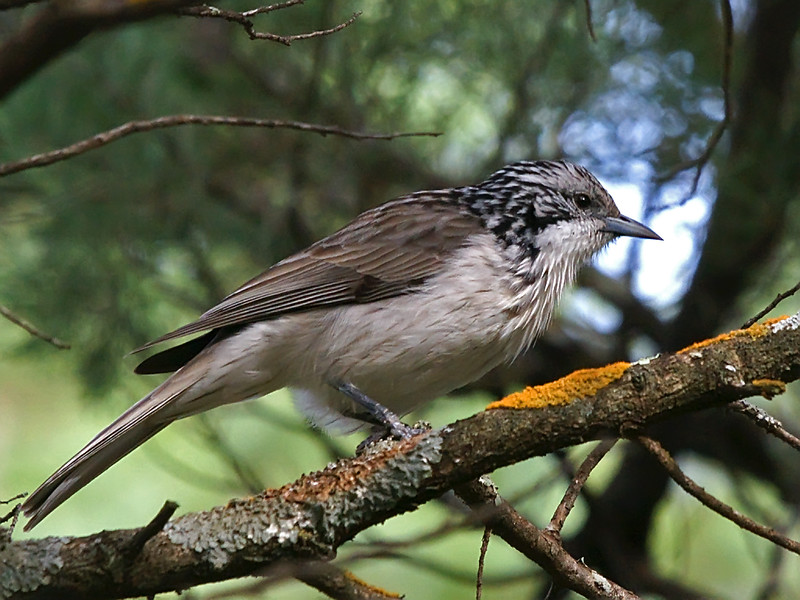Identification
CETTI’S WARBLER (Cettia cetti) is a fairly large but very skulking warbler of dense waterside undergrowth with a broad, rounded tail and often slightly ‘untidy’ appearance. The unstreamed dark reddish-brown above, with pale greyish-washed sides of head and breast contrasting somewhat with more rufous flanks and undertail coverts and fairly weak greyish-white supercilium.
This old-world warbler is 13 to 14 cm from bill to tail, with an average weight of 14 to 15 g. The strong legs are reddish-brown. Compared with unstreaked Acrocephalus warblers, they are relatively chunkier, with grayer-toned underparts and strongly rufous-toned, darker brown upperparts, a more rounded head, and a smaller and weaker bill.
However, the tail is broader and more rounded and is frequently cocked. In good view, undertail coverts can be seen to be short and broad, with weak pale scalloping (in Acrocephalus, they are rather longer, narrower, and more uniform).
Savi’s Warbler has similar skulking behavior and similar calls (but not song) but has a longer, fuller tail with longer, broader under tail coverts, flat or peaked crown shape, stronger bill, buffer-toned underparts, and paler legs. Presence is almost invariably revealed by loud, distinctive, explosive bursts of the song (given virtually throughout the year). Hops in wren-like fashion, flicking wings and rounded tail, through tangled undergrowth.
Cetti’s Warbler
Cetti’s Warbler Song
Cetti’s Warbler Song includes an abrupt, sharp ‘chip’ or ‘chich’, a loud, sharp ‘tsuk’ (recalling the mobbing call of Common Blackbird). And a prolonged rattle (recalling Winter Wren, but higher and more metallic) when intensely alarmed. The song is unmistakable and has an astonishingly loud, explosive, liquid, staccato series of notes, which might be rendered as ‘PWIT-piti-chewit-chewitchewit’ or ‘CHIP-pip-chetchetchetchet’.
The Song is given virtually throughout the year; appears to double as a contact-alarm call. It is usually singing from the inside cover but often climbs into view when singing near the top of the thicket. Quite inquisitive but nervous: often goaded into vocal activity by a sudden noise.
Geographical Variation
Race orientalis of C Turkey and Transcaucasia southwards and eastwards is slightly grayer above and whiter on the breast than in the nominate race.
Status and Habitat
Locally common. Has spread northward in recent decades to colonize South Britain and Belgium. (In addition to the mapped range, has bred Switzerland, Netherlands, and Germany.) Tangled thickets by lakes, marshes, rivers, streams, and ditches; also patches of willows or brambles among reedbeds. This is a small old-world warbler, breeds in Europe, Africa, and Asia.
Diet
The Cetti’s Warbler prefers damp areas like lakes, ponds, rivers, and marshes. This is an insectivorous bird, so likes to eat soft-bodied insects and larvae, because it can digest them very quickly.
Molt
Moreover, the complete post-breeding molt is usually finished in early September. But partial post-juvenile molt includes body feathers, lesser and median coverts, inner greater coverts, and some tertial.
Also, some specimens can molt all the greater coverts and a variable number of flight feathers. But the primary coverts are always retained; they are usually finished in September. Some specimens have pre-breeding molting wing coverts and some are tertial.

Also Read: The Orange-breasted Bunting / The fire-tailed myzornis / The Bar-tailed Desert Lark / Dusky Naumann’s Thrush (Turdus eunomus)
Affiliates Links:
-
How One Woman Discovered the Female Fat-Loss Code Missed by Modern Medicine And Lost 84lbs Using a Simple 2-Step Ritual That 100% Guarantees Shocking Daily Weight Loss
-
60 Seconds Habit! That Reversed Type 2 Diabetes and Melted 56 lbs of Fat
-
Boost Your Energy, Immune System, Sexual Function, Strength & Athletic Performance
-
Diabetes Remedy # 1 Mega Offer for 2019






